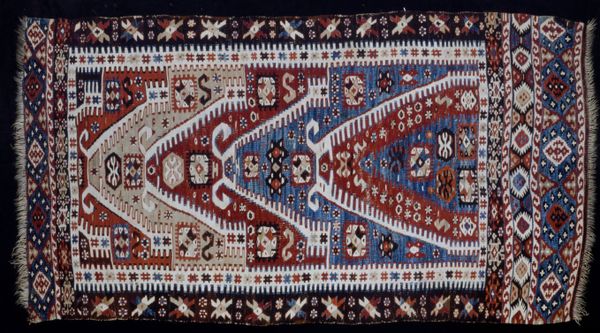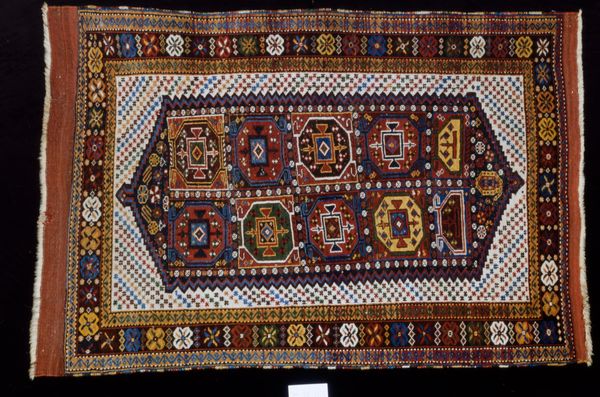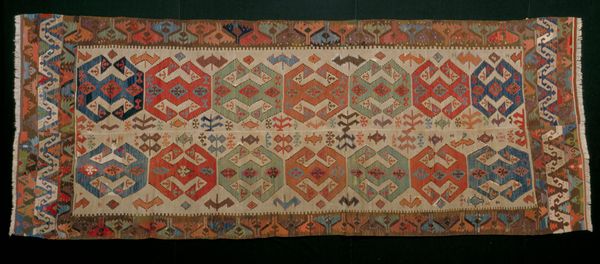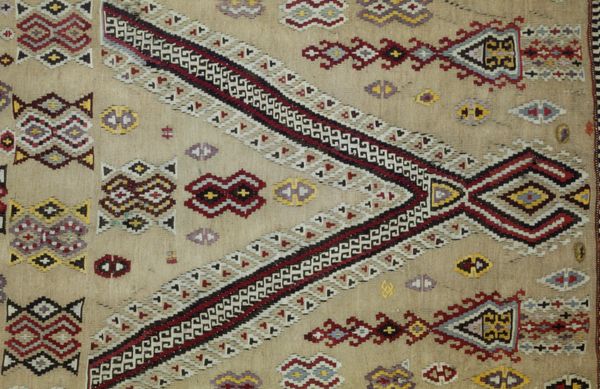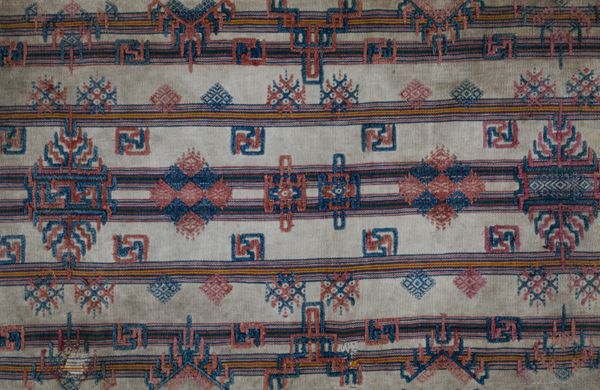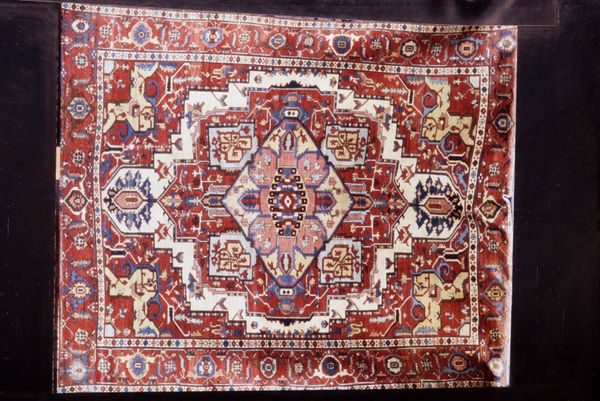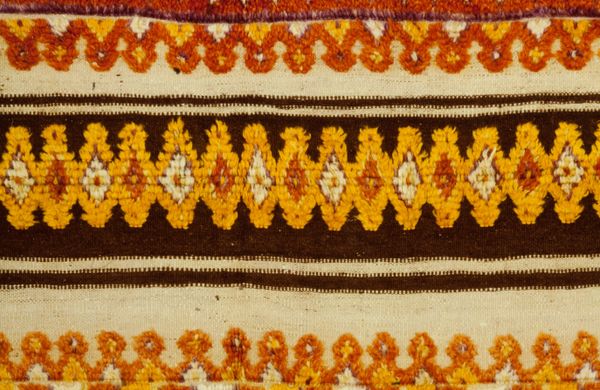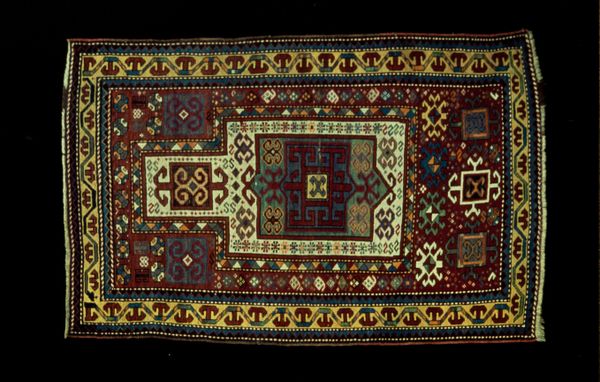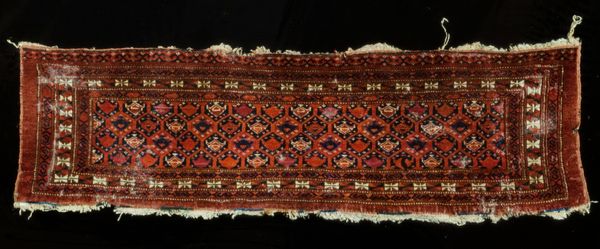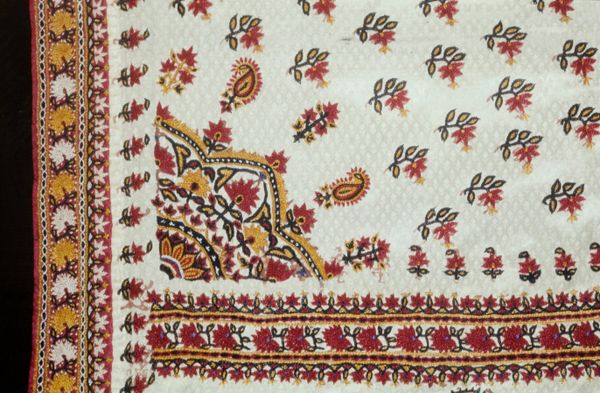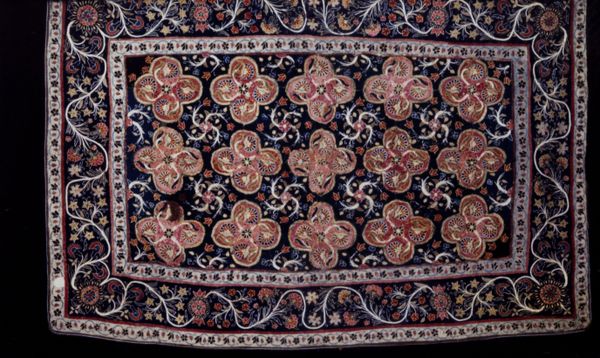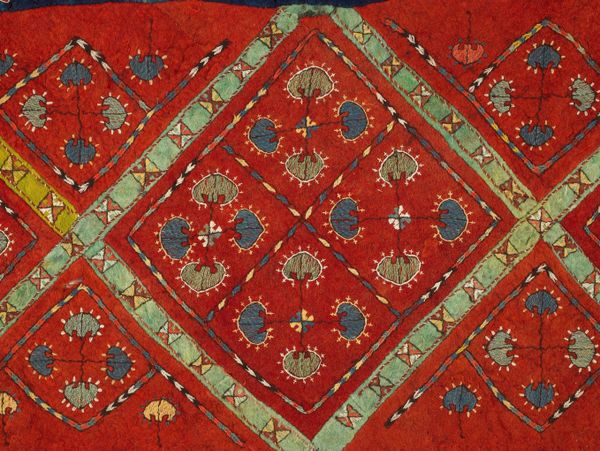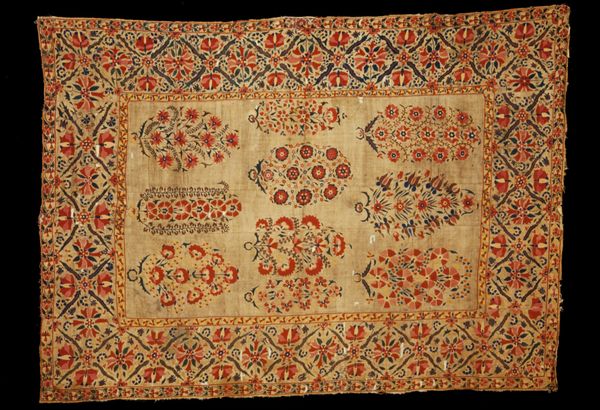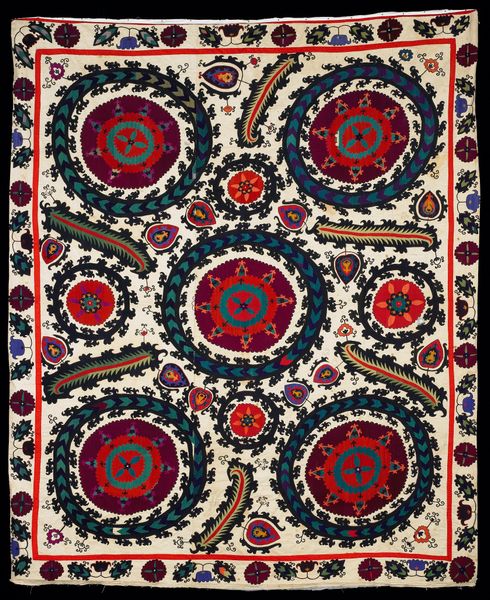
weaving, textile, wool
#
weaving
#
textile
#
wool
#
geometric pattern
#
ethnic pattern
#
geometric
#
abstraction
#
islamic-art
#
decorative-art
Dimensions: 72 x 48 in. (182.88 x 121.9 cm)
Copyright: Public Domain
Editor: This is a prayer rug from the 19th century, woven from wool. I’m really drawn to its intricate geometric and floral patterns. The colors are so rich and earthy. What do you see in this piece? Curator: This rug, while seemingly decorative, embodies a complex intersection of cultural, religious, and socio-economic narratives. The geometric patterns aren't merely aesthetic choices, but a reflection of Islamic art's tradition of abstraction and the avoidance of figural representation in sacred spaces. Do you see how the patterns might also be interpreted as a form of visual language, communicating cultural identity and perhaps even social status? Editor: That's a great point. I hadn't considered the social status aspect. The craftsmanship looks incredibly skilled. Would that reflect on the owner, perhaps? Curator: Precisely. The quality of the wool, the intricacy of the design, and the dyes used all speak to the resources and expertise available to the rug's commissioner and the weaving community. Rugs like this were not simply functional; they were potent symbols of identity and devotion within a broader historical context where trade routes, religious practices, and artistic traditions converged. Thinking about it within the framework of postcolonial theory, how might we consider its presence in a Western museum today? Editor: That’s really fascinating! It highlights the journey these objects take, and how their meaning shifts as they move through time and across different cultural spaces. Curator: Indeed. And understanding this rug requires an awareness of the power dynamics embedded in its creation, its original context, and its current presentation. Each motif carries layers of meaning, whispering stories of faith, artistry, and cultural exchange. Editor: Thank you. Now I have a different appreciation of its beauty and history. It goes way beyond the patterns themselves.
Comments
No comments
Be the first to comment and join the conversation on the ultimate creative platform.
